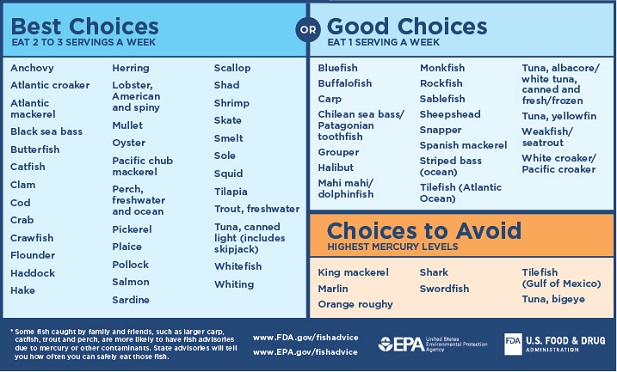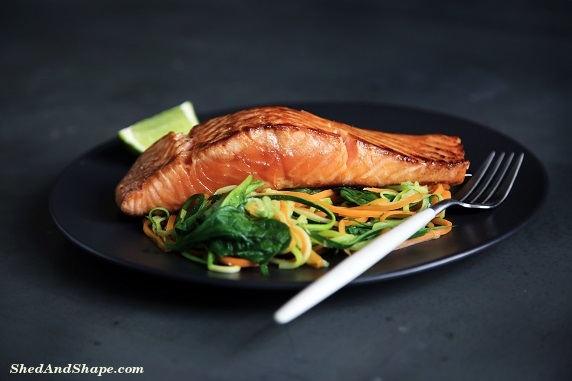The Pescatarian keto diet is one of the latest variations of the ketogenic diet that has recently been gaining popularity.
For those who don’t already know, a pescatarian refers to a person who doesn’t eat meat but eats fish instead. From this, we can say that the Pescatarian keto diet is a type of ketogenic diet that doesn’t include any meat.
People who don’t know much about the keto diet are often surprised when they find out that it’s possible to go keto without having to eat meat. Usually, when people hear about the ketogenic diet, they will immediately associate it with lots of bacon, steak and poultry.
But what they didn’t know is that it’s definitely possible to go meat-free while living the ketogenic lifestyle. And that’s what the Pescatarian keto diet is all about.
In this article, we’ll take a closer look at this diet to understand if it’s healthier or better than a regular keto diet.
What Is a Pescatarian and What Do They Eat?
As mentioned, pescatarians are those who prefer to eat fish or seafood instead of meat. They consider themselves mostly vegetarian, except they eat fish and other seafood.
As a result, they will enjoy the health benefits that come with a plant-based diet plus the heart-healthy benefits of fish.
Related reading: Keto and Heart Disease: Are Keto and Paleo Bad for your Heart?
Their diet consists mainly of legumes, nuts, whole grains, healthy fats, vegetables and fruit. They get their proteins from the seafood that they eat. Other pescatarians also include eggs and dairy in their diet.
There are many reasons why people would follow the pescatarian diet, but the biggest reason is its health benefits. Several studies have shown that plant-based diets may help to minimize your risk of developing chronic diseases, such as diabetes.
If you combine this diet with the ketogenic diet, then you will absolutely get the best of both worlds. Emily Kyle, R.D.N has this to say about the Pescatarian Diet,
“You’ll reap the nutritional benefits of a plant-based diet, as well as the nutritional benefits of fish and seafood.”
What Is a Pescatarian Keto Diet?
The combination of vegetarian diets and the keto diet is not new. There are tons of vegetarians out there who were able to adapt to the keto lifestyle just fine. Therefore, combining the pescatarian and keto diet is definitely doable.
Many people are able to successfully achieve and maintain ketosis even without eating meat.
Of course, meat eaters will find it easier to reach ketosis since they are able to get a good amount of healthy fat and protein from grass-fed meat. Most of the vegetarian protein sources are usually limited and can be pricey.
The Pescatarian Keto diet may not be as easy to follow as the regular keto diet but it is considered better by some than the vegetarian Ketotarian Diet. It’s because you’ll have more food options, especially when it comes to your protein intake.
Is Pescatarian Keto Healthier Than the Regular Keto Diet?
The ketogenic diet is one of the most popular diets today, due to its amazing health benefits, both for mental and physical health. If you combine this diet with the pescatarian diet, then you’ll enjoy even more amazing health benefits.
Some of the benefits that you can get by combining these two diets are:
· Easier to lose weight
· Increased energy levels
· Improved mental health
· Reduced food cravings
However, in order for you to get the full benefits of both diets, you have to make sure that you’re eating the right things. You have to be able to maintain the right macros in order to stay in ketosis.
What about toxic pollutants in fish?
With all that we hear about mercury, PCBs, dioxins and plastic fibers in fish you have to wonder if it’s good to eat a lot of it these days.
Related reading: Do Toxic Chemicals Make You Fat?
Mercury
Methyl mercury which is found in fish, especially oily fish, can negatively affect the central nervous system, particularly the developing brain of a fetus.
With this in mind the FDA and EPA have issued their advice regarding eating fish. They recommend that pregnant women, women who intend to become pregnant, breast feeding women and parents and caregivers feeding children 2 years and older make informed choices when it comes to fish that are nutritious and safe to eat.
I’ve added below a chart from their site where they recommend that people mentioned above should eat 2 to 3 servings of fish a week from the “Best Choices” OR 1 serving from the “Good Choices” list.

However according to Chris Kresser
These recommendations are too strict, because they don’t take the protective effects of selenium into account. As long as the fish is higher in selenium than it is in mercury, there’s no reason to limit consumption to 12 ounces per week.
Most species of commonly eaten fish in the U.S. have more selenium than mercury.
PCBs and dioxins
Surprisingly Chris Kresser says that fish are not significant sources of PCBs and dioxins when compared to meat, dairy or vegetables! Fish constitute only 9% of our dietary intake of these chemicals whereas beef, chicken and pork constitute 34%!
Plastic fibers
According to a study to estimate human ingestion of plastic pollution the average person eats at least 50,000 particles of microplastic a year and breathes in a similar quantity.
In the first study of its kind researchers from the Medical University of Vienna and the Environment Agency Austria discovered microplastics in the stools of humans across the globe.
The results show that every single stool sample tested positive for the presence of microplastic and up to nine different plastic types were identified.
According to scientists the health impacts of ingesting microplastic are unknown, but they could release toxic substances. Some pieces are small enough to penetrate human tissues, where they could trigger immune reactions.
In an article for Scientific American Andrea Thompson the author states:
Ingested microplastic particles can physically damage organs and leach hazardous chemicals—from the hormone-disrupting bisphenol A (BPA) to pesticides—that can compromise immune function and stymie growth and reproduction.
Conclusion
On the face of it the pescatarian keto diet seems like a truly powerful combination. In fact, if you feel that you’re not getting your desired results with regular keto, you may want to consider switching to the pescatarian keto diet if you like fish.
You could too consider the Ketogenic Mediterranean Diet which includes fish and not a lot of red meat.
Remember that while the ketogenic diet can be truly effective, it may not work for everyone. The key is to experiment and see what works best for you.
Whether you follow the pescatarian keto diet or the meat based keto just make sure you adhere to the recommended macros for keto.










